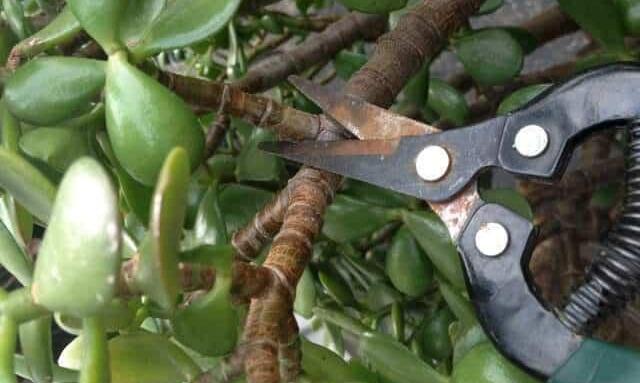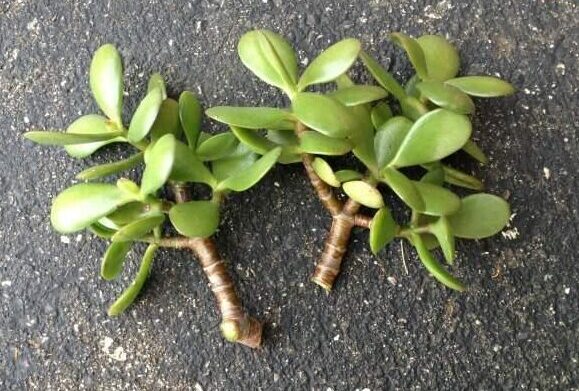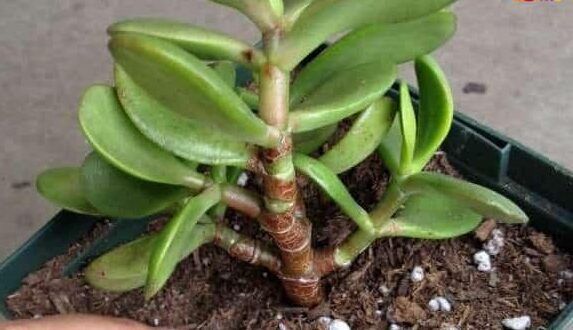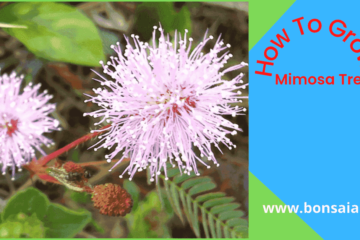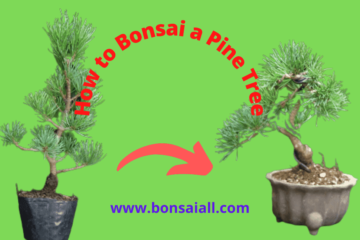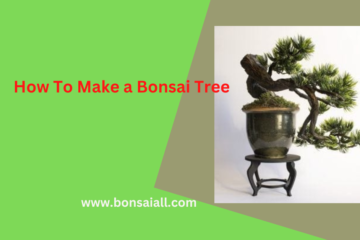Do you know how to propagate a jade Plant? Propagation of the jade plant also known as ‘money plant’ is very easy and there are a few methods you can use. In this post, I’ll talk about how to grow a jade plant from leaf or stem cuttings, give you the details on how to take a cutting, and show you exactly how to propagate a jade plant, step by step.
Propagating jade plant from leaf or stem cuttings is very easy. In fact, jades are one of the best plants to start with if you’ve never tried propagating plants before.
Jade Plant Propagation Methods
Content Overview
Jade plants can be reproduced from stem or leaf cuttings . Keep in mind that it takes a while to get a good sized jade plant from leaf cuttings.
So if you want a head start and don’t want to wait that long, I recommend propagating stem cuttings from jade plants instead of the leaves.
But either method is very easy and works great! Below, I will show you both methods how to propagate a jade plant, step by step.
When to propagate jade plants?
Jade cuttings need a warm, moist, but well-ventilated environment for roots to grow. So summer is the perfect time for jade plant propagation.
Jade plants are extremely easy to propagate during the warmer months of the year. Many times, a branch or leaf will break off and begin to take root in the ground without your help.
But, with the right conditions, you can propagate your jade at any time of the year.
Jade Plant Propagation
Before I start showing you how to propagate a jade plant, you may want to gather a few supplies first.
Don’t worry, you won’t need a ton of expensive propagation supplies to root jade plant cuttings, but you will need a few things…
Things you will need:
- Jade plant stem cuttings or leaves
- Bonsai potting soil (or mix your own with perlite, potting soil, and coarse sand)
- plant rooting hormone
- clean a bonsai pots
- Pair of scissors or clippers
How to reproduce a jade plant from cuttings?
The fastest way to get a decent sized jade plant is to grow it from stem cuttings . You can propagate stem cuttings of any size, even large ones.
So if a branch has snapped or you have a broken stem on your jade plant, try propagating it. If you are pruning your jade plant, save the clippings for propagation.
Otherwise, if you just want to take a cutting specifically for propagation, here’s how…
How to take a cutting from a jade plant
The first step in jade plant propagation is choosing where you want to cut the stem to make a new plant.
If you are taking stem cuttings, make sure you get at least 1-3 inches from the stem to give yourself enough area to root the cutting. Use a clean, sterile clipper or scissors to cut the stem.
You can soak your scissors in rubbing alcohol or wash them in soapy water to sterilize them before cutting the jade stems.
If there are leaves growing all the way up the stem, remove a few sets of leaves. A jade plant cutting will root from leaf joints along the stem, so the more leaf joints it has, the greater the chance for roots.
Preparation of a jade plant cutting
After taking a cutting of your jade plant, allow the ends of the cuttings to dry out (dry out and die down) for a few days before propagating.
This will help prevent jade plant cutting rot. The larger the cut, the longer you should let it heal.
This isn’t as much of a concern in the summer months, but it’s definitely something you’ll want to do if you’re propagating your jade plant over the winter.
How to reproduce the jade plant from leaves?
Jade plant leaf propagation is definitely possible and fun to experiment with. However, it will take you much longer to grow a large jade plant from leaves than stem cuttings.
So keep that in mind before propagating a bunch of jade plant leaves. If one sheet is all you have to work with, or you want to try this method, here’s how to get started.
How to take leaf cuttings
To successfully grow a jade plant from a leaf, you need to make sure you take the leaf cuttings correctly. If you plan to use the leaves for jade plant propagation, carefully cut each leaf.
Make sure you get the entire stem of the leaf when you break it off. If the lower part detaches from the leaf, the leaf will not take root.
Make sure you get the entire stem of the leaf when you break it off. If the lower part detaches from the leaf, the leaf will not take root.
Preparing a jade leaf for propagation
You don’t need to worry about curing leaf cuttings like you do with stem cuttings. It certainly won’t hurt to let them dry out for a few days before trying to root them.
But don’t let them sit for too long or they might wilt completely. You will not be able to propagate jade leaves that are completely dry.
How to root jade cuttings in the ground
The best way to root jade cuttings is by planting them in the ground. Do not use a closed propagation chamber or plastic bag for this.
If the cuttings get too much moisture, they will only end up rotting. Follow the steps below to root a jade plant cutting in the ground
Step 1: Rooting Hormone Powder for Jade Cuttings – Not only will cuttings root faster when you use rooting hormone, you will also have more success starting a jade plant from cuttings when you use it.
Rooting hormone will help the cuttings root faster, and I recommend using it. To use, simply sprinkle the stem of your jade cuttings or the cut end of the leaves with rooting hormone.
Step 2: Fill Your Container with Soil – Fill a container loosely with your soil mix. Jade plants will root best in light sandy soil containing a mixture of coarse sand, potting soil, and perlite.
General potting soil alone is often too heavy to propagate a jade plant and can cause cuttings to rot.
If you don’t want to mix your own, you can use a commercial succulent potting mix or a sandy succulent potting mix to propagate your jade plant cuttings.
Step 3: Make a hole in the soil for the stem – Then use a pencil or your finger to make a hole in the middle of the rooting mix for the jade plant cutting.
Gently place the cutting in the hole so that the rooting hormone does not rub off. Then, lightly pack the soil around the base of the cutting so it stays in place and the soil is in contact with the stem.
If you are growing a jade plant from a leaf, then you don’t need to drill a hole. You can simply lay the leaves on top of the soil or you can cover the cut end with a thin layer of soil.
Step 4: Move Your Jade Cutting to a Sheltered Area – Place the jade plant cutting in a spot where it will be protected from full sun. Do not water your jade cutting until it is rooted.
If the air is very dry, lightly mist the cutting every day with water using a mist/plant sprayer. Be careful though, they don’t need a lot of moisture.
Once you start to see new growth on top of the jade plant cutting, that’s a good sign that it has started to take root.
How long does it take for jade cuttings to sprout roots?
If you’re wondering how long it takes for jade cuttings to take root… well, that depends on the environment they’re in.
If the air is very dry, the cuttings will take longer to take root. Under the right conditions, it usually takes 2-3 weeks for cuttings to start rooting.
Transplant of jade cuttings
Once roots have formed on the jade plant cutting, you can water it as you normally would any jade plant. They don’t need a lot of water, so let the soil dry out completely before watering again.
You can leave the baby plants growing in their pots until they are big enough for pots. I usually wait until the babies have outgrown their initial pots before transplanting jade plant cuttings into larger pots.
If you tend to over-water plants, place your jade plant in a clay pot instead of a plastic pot.
The best type of potting soil for jade plant cuttings is potting soil.
Other aspects to consider
Remember that jade plants grow well when they are in temperatures between 18 and 24 degrees Celsius. It is also important to fertilize your plants every 6 months using liquid fertilizer. Fertilizer should be applied after watering, never before.
Jade plant propagation seems difficult, but it is very easy! Now that you know how to grow jade plants from leaf and stem cuttings, you’ll have tons of free plants! They make great gifts and are fun to share with friends.
Related Article :

